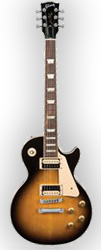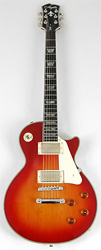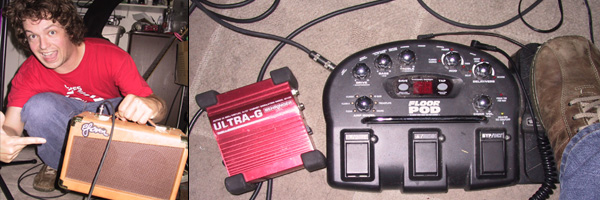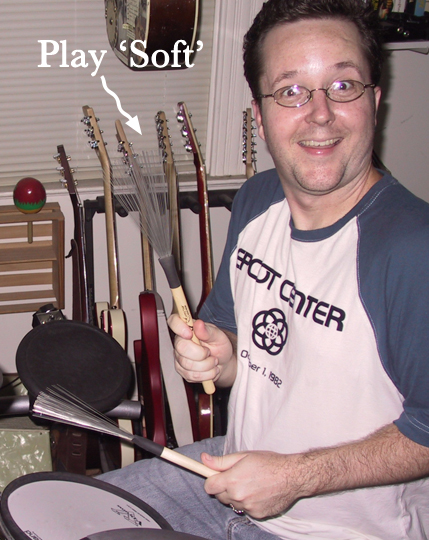The Flute Squad isn’t exactly rolling in cash, so when we buy stuff we do a lot of research in order to get the best value for our money. We certainly never skimp when it comes to quality, be it spending a few extra bucks per t-shirt for a nicer cut and material, paying monthly to be hosted here at Squarespace (for ease of use and their excellent analytics), or buying a microbrew for the kegerator. Our track record for not buying crap is pretty good.
I hope most bands would agree with our philosophy of buying quality gear. But I’m completely flabbergasted when I see a local band playing their third gig ever, and the guitar player pulls out a $1500 Fender Strat Deluxe. Even worse was when a metal guitarist we played with at The Black Hole Rock Club rolled in with a huge case filled with 7 guitars, all of which were easily over $1000 each. For a 30 minute set at The Black Hole?! In Dundalk!?!
Look expensive guitar guys, I get it, you have a small penis. But the ladies can’t tell the difference between your $2k Les Paul and my $150 Hondo II LP clone. They’re both shiny and sound the same blasted at high volume. You’re better off buying the cheap guitar and using the leftover cash for hairplugs.
Seriously, the only people who might be impressed that you’ve blown mucho moola on a really expensive guitar are other guitarists. So aside from the name on the headstock, what is the point of spending the extra money on a high-end Strat or Les Paul? Well, let’s run down a list of features to see if we can sort this out. We’ll compare a mid-level Gibson Les Paul and a mid-level Agile from Rondo Music.
| $2000 Gibson Les Paul Standard
-Mahogony Body -Set Mahogany Neck -Rosewood Fretboard -Grover Tuners -Alcino Pickups -Case with Gibson Logo on it |
$370 Agile-3000 LP Knock Off
-Mahogany Body -Set Mahogany Neck -Ebony Fretboard -Grover Tuners -Alcino Pickups -No Case ($60 extra) |
So…. Yeah, not much difference in features. To be fair, the pickups are different, so let’s add in another $130 to match those (Burstbucker 3 is $60 on Ebay and a 57 Classic is $70). But let’s subtract $50 because the Agile’s ebony fretboard is actually more expensive than the rosewood on the LP. Do the math and the price you’re paying for the Gibson logo on the headstock and case is $1490. That’s just bullshit and a monstrously huge fucking rip-off to boot.
“But the Les Paul plays so much better!” I hear guitar snobs whine.
No. Wrong. Fail.
With a proper setup the Agile will play just as well as the Gibson, and to be honest the Agile folks probably spend more time setting up the guitar before it leaves the shop than Gibson does. So out of the box the Agile might actually play better! Plus, “better” is a relative term anyway. What feels good to you might feel like shit to me. What if I like my strings to be 1-inch off the fretboard? With either guitar you’re probably going to have to spend some time tinkering with the bridge, truss rod, and pickup height to get it to where it feels best for you.
“But the Les Paul sounds so much better!” those same snobs shout.
Really? You’re going to tell me that with the same wood and pickups you’re going to be able to tell a difference? Here’s a challenge: go to Guitar Center and ask someone to take an expensive guitar (Les Paul, Strat, Tele, or whatever) and a cheapo clone with similar specs off the wall. Turn your back on that person and have them play both guitars through the same amp, randomly switching back and forth between the guitars while playing a variety of riffs, leads, jazz chords, etc. After each switch-off, tell me which one sounded better.
I bet that:
a) you won’t be able to tell the difference
or
b) if you can tell the difference you’ll prefer the cheapo knock-off 50% of the time.
In fact, DMFS is willing to put our money where our mouth is. If anyone wants to take us up on this blind listening test, we will give you $100 in cash if you’re able to pick out the expensive guitar more than 80% of the time. Message us here on the board and we’ll work out a time to meet up at Guitar Center or Bill’s Music! (of course if you lose, you’ll have to be Horsepower’s personal butler for a week)
At the end of the day, it doesn’t matter how much the guitar costs. What matters is the person playing it. If you suck you’re going to suck just as bad on an expensive guitar, and if you’re awesome you’ll be able to make any guitar sound good.
Case in point:







